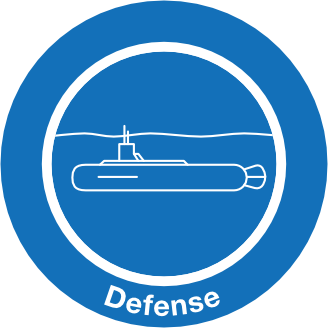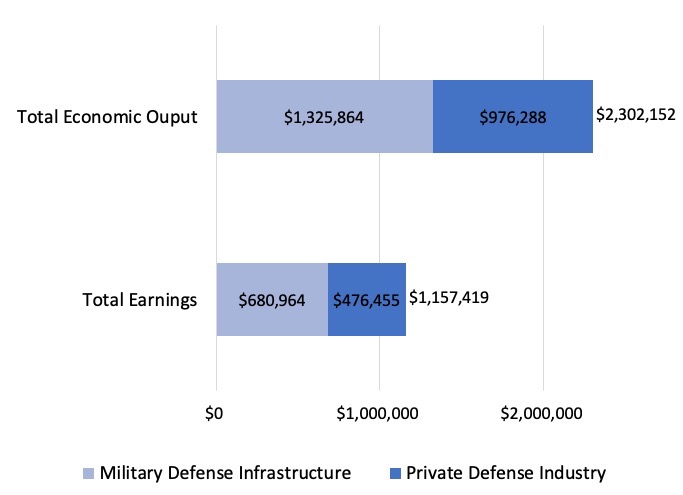
Recent Trends
Data were obtained from The Economic Impact of the Rhode Island Defense Sector (Tebaldi, 2014):
- The defense sector contributes significantly to the local economy: in 2013, the sector supported 17,500 jobs, which generated over $1.1 billion in wages and $2.3 billion in economic output (2016 dollars) (see graph). This includes both private contracts (37% of jobs) and military defense infrastructure employees (63% of jobs). In the same year, the defense sector contributed $2.3 billion, or roughly 4%, to the state’s GDP – 42% of this contribution was from the private sector while 58% from military defense infrastructure.
- Defense is the highest paying industry in Rhode Island: in 2013, private sector employees earned an average of $74,500 annually, civilian employees working for the U.S. Department of Defense (DoD) earned an average of $97,000 annually, and NUWC employees earned $114,000. This is considerably higher than other critical industries in the state such as manufacturing (average full-time wage of $53,000) and leisure and hospitality ($19,000).
- The private defense industry is growing: in 2013 alone, the DoD engaged in 4,768 transactions with over 200 private contractors in RI, awarding over $736 million in contracts. Currently, the private sector is growing at a faster rate than its public counterpart.

Future Outlook
Given the close proximity of infrastructure to the coastline, rising sea levels pose a major threat to the defense industry in the NBW due to climate change – one study of 18 coastal Naval installations in the U.S. predicts that flooding incidents will increase at least tenfold at most locations by 2050. The National Oceanic and Atmospheric Association predicts that sea level rise in the Northeast Atlantic will be higher than the global average, with an increase of up to 9.8 feet by 2100. Even just a one-foot rise in sea level would impact key infrastructure and buildings such as the Naval War College in Newport. Additionally, increasing frequency and intensity of storm events also pose flooding threats. These changes will likely necessitate the adaptation of defense sector infrastructure looking forward.
Read the full defense sector chapter

